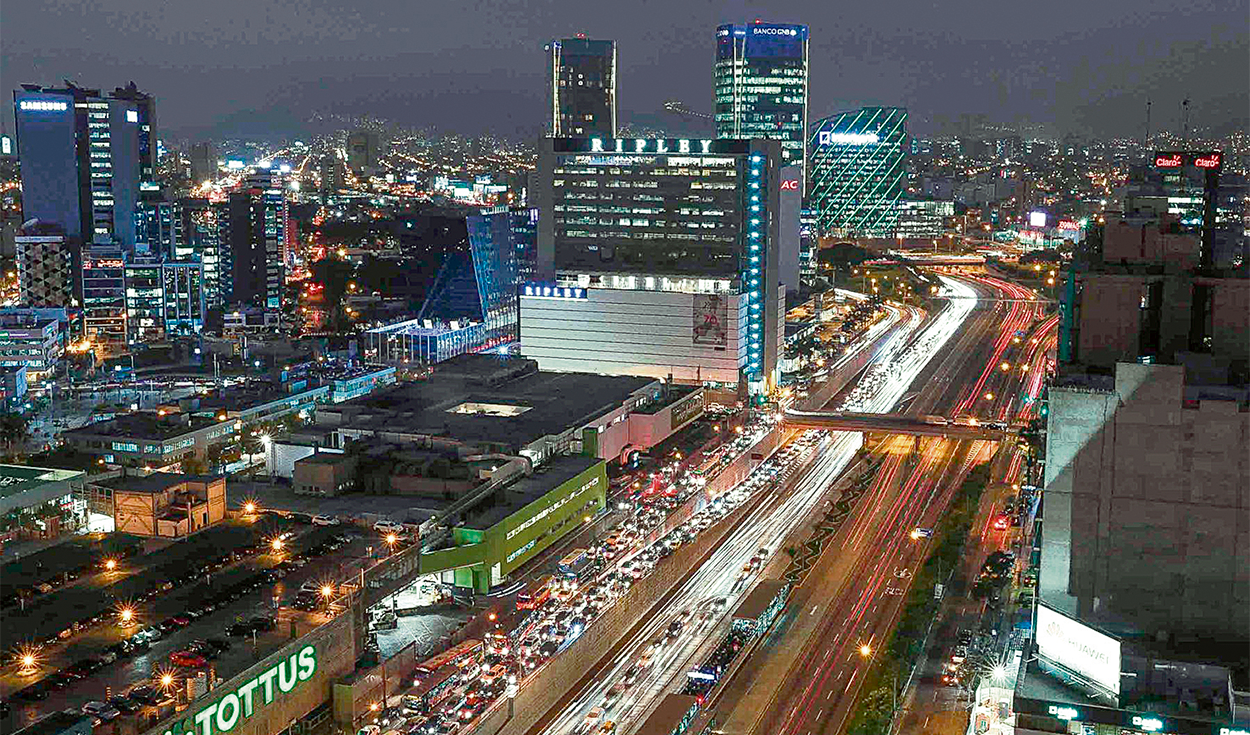
While the worst economic year in more than two decades – not counting the pandemic – is dying, by 2024 the Ministry of Economy and Finance (MEF) continues to see the glass half full and insists that GDP will reach 3% in the next 12 months.
The Executive’s reading coincides with that of the Central Reserve Bank of Peru (BCRP), although Minister Alex Contreras avoided detailing which sectors would be behind the statistical rebound after the recession, and barely mentioned that private investment will play a key role.
“Growth will occur mainly in the second half of the year, with a positive first quarter that will accelerate throughout the year (…). After having fallen around 12% in the first quarter, (private investment) has been recovering and we expect a higher one for 2024,” he told the press.
However, the BCRP estimates that GDP will rise 0.7% in the first quarter; in the second, 2.8%; in the third, 4.1%; and in the fourth, 4.8%. Julio Velarde indicates that agriculture and fishing would have “a greater recovery with a moderate El Niño phenomenon.”
“It is not advisable to throw a figure”
One of the strongest criticisms of Contreras’ management in the MEF was for belatedly recognizing the recession—which he even called “temporary.” Beyond the fact that for some specialists consulted by La República, pessimism cannot prevail in a minister, they also consider that optimism is not healthy.
Juan José Marthans, economist and former head of the SBS, considers it not advisable to launch a target figure for 2024, and it would have been more prudent for Contreras to commit to perfecting the Unidos plan, since the programs “do not contain anything new to reactivate.”
“No MEF (period) has been able to (reactivate). Channeling greater resources to subnational governments does not work. Decentralization is a disaster: the resources are not executed and half go to corruption,” he questioned.
It should be added that fronts such as the BCP Economic Studies Area warn that the rebound of 2024 will not be enough to reduce poverty – they predict a 2% rebound and even carries “a significant level of uncertainty” -.
The Lima Chamber of Commerce (CCL) agrees and, although they predict an advance of 2.6%, they regret that Peru has lost its potential and does not exceed 4% annual growth since 2013, with the exception of 13.3% 2021: manufacturing, construction, mining and hydrocarbons and commerce would push the car.
Confidence on the ground
The main cause of the recession, according to the CCL, has been political uncertainty and social protests. Proof of this is the prolonged pessimism in business expectations collected by the BCRP despite the change of pieces in the Government Palace.
Marthans alleges that Peru suffers from a sociopolitical problem linked to the upcoming presidential elections and the reputation of Congress—which has the highest levels of popular disapproval in recent years—; and he believes that a first step to get out of the lethargy is to modify the Otárola cabinet, and with it, the MEF.
“Contreras has lost the trust and credibility of economic agents. The rebound is meaningless luck. Anyone can achieve it,” he added.
Breaking down the political decisions of the recession
Luis Arias Minaya, former head of the Sunat and the Banco de la Nación, commented on previous occasions to this newspaper that the MEF does not have enough fiscal space to act in this recession, since tax revenues have fallen, which is why there is no so much room to increase public spending, to the point that the deficit rules will be broken this year: it will be -2.5% of GDP.
Meanwhile, Juan Carlos Odar, director of Phase Consultores, considers “a big mistake” to rely on public support for the MEF programs and to “neglect the promotion of private investment”—which covers 80% of total investment and is more dynamic in employment.
Figures
- 3.1% will be the annual GDP growth between 2024 and 2026, according to the MEF.
- 2043 Poverty would only reach 20% of Peruvians (pre-pandemic) that year if it grows annually at 3%, according to CPC Peru.
- -0.5% GDP would fall this year.
Source: Larepublica
Alia is a professional author and journalist, working at 247 news agency. She writes on various topics from economy news to general interest pieces, providing readers with relevant and informative content. With years of experience, she brings a unique perspective and in-depth analysis to her work.












